Automating Risk-Factor Tracking and Screening in Dental Hygiene Practice
Navigating the new nicotine landscape
The use of oral nicotine delivery products (ONDPs), along with vaping and other modifiable risk factors (MRFs) have surged in the last decade. More recently the rate of use of novel non-tobacco ONDPs, such as nicotine pouches (NPs), have been increasing particularly among adolescents in Canada. In 2023 NPs snuck through Health Canada regulatory loopholes and entered the market as a natural health product. In 2024, Health Canada took measures to close the legislative door for tobacco manufacturers.1
Despite moving them behind the counter, and removing attractive packaging and candy-like flavouring, these products remain available for purchase with no requirement of age verification, which has left them accessible to children and youth. Some proponents view them as healthier alternatives to tobacco
products, and a method of harm reduction. However, many health professionals are left concerned with the potential impact on Canadian public, introducing yet another vector for nicotine addiction. As oral healthcare providers, we are faced with an increasingly changing and complex landscape of modifiable
risk factors, to both detect, track, communicate and most importantly support the cessation-of-use of these products. Dental hygienists play a critical role in the clinical detection and risk-management, in response to these products.
Clinical manifestations and management of ONDPs
As with any new phenomenon, there remains a glaring gap in high-quality research, surrounding the use of NPs including products like Zyn (no tobacco) and SNUS (with tobacco). Emerging research includes reports of various manifestations of white lesions (grainy, round, leathery and linear)2,3,4, xerostomia,
other oral lesions, as well as sore mouth, and throat. 5,6 Most critically, upon evaluation of salivary inflammatory biomarkers including interleukin (IL-1, IL-6, IL-8) and tumour necrosis factor-alpha (TNF- alpha), both the SNUS and NP groups demonstrated the highest level of salivary inflammation, compared to other risk-factor groups including cigarettes, e-cigarettes and control.2 These findings highlight the
potential risks for oral cancer development in these populations and underscore the importance of close and accurate clinical monitoring and communication. 7
The detection, documentation, and communication gap
With continually emerging risk factors, that are by design difficult to identify and detect, where does that leave the clinical provider in terms of tracking these addictive behaviours and insuring sufficient clinical discussions and timely follow-up?
Canadian dental hygienists have long moved away from a broad-strokes approach in clinical care, to patient centered, evidence-based and evidence-informed practice models, models that are tailored to
individual client needs and preferences and are either based-on or informed-by evidence8. It goes without saying that our clients are better cared for and managed with the clinical standards that have now evolved into comprehensive guidelines and protocols that are our present standards of care. This does not mean
that these standards are fully developed, or to say that there is no more room for amelioration; indeed,
there is always room for improvement, particularly in the case of tracking and monitoring modifiable risk factors, like the use of NPs.
With the introduction of vaping, ONDPs as risk factors, the clinical signs of use are now much more
nuanced, than they were with the classic trifecta of smoking, alcohol and chewing tobacco. The products themselves are designed to be “discreet”, with often no residual smell on the user, nor brown staining on the hands.
Vaping has proven to be a very difficult behaviour to detect intra-orally, and the early use of ONDPs, can also prove difficult to detect, even with the most stringent of clinical screening. This places an even
higher burden on the accuracy and consistency of clinical documentation to record such risk factors and them flag appropriately. In terms of screening, yes, every client at every appointment should have oral cancer screening done, this is best practice. But what if the screening does not produce clinical signs of use?
The gig-era challenge: Continuity of care in the absence of consistency
Ensuring continuity-of-care in the dental setting has seen a shift in recent decades. With an increasingly inconsistent and transient and larger workforce, maintaining clinical standards and communication in
patient care has its own set of challenges. Systematising standards of care is one of the methods that can ensure consistent follow-up and consistent risk-management.
With patients often seeing different clinicians, perhaps a temporary employee, a locum dentist or simply living the reality of being part of a multi-office network, this presents unique challenges in maintaining continuity of care and managing risk.
ONDPs complicate this reality with their discreet nature, and higher-risk profile and necessitates a systematised approach to the screenings, findings and follow-ups for developing a risk profile for this population. This requires a dental hygiene specific management software solution that can play a crucial role in ensuring continuity of care in the face of these staffing variabilities and the general clinical
demands of a busy practice. Software is currently available that can ensure that a practice’s standards of care are adhered to, thus greatly enhancing the continuity of the delivery of that care.
Enabling smarter risk-management RNA180
RNA180 provides unmatched support and automation for dental hygienists when it comes to treatment planning and creating patient-specific risk profiles. Take the example of a patient with a high CAMBRA score. A patient’s “DNA” (a customized framework of service frequencies) is automatically adjusted to
reflect the right intervals for fluoride, scaling, examinations, scanning and radiographs etc. When the next appointments are built, services are suggested based on the DNA risk profile the provider customizes for that patient. This ensures that no matter which clinician is delivering care, the treatment plan is clear,
consistent in the face of provider changes and of customised to patient’s individual needs.
Example of an RNA180 “DNA Profile”:
High CAMBRA: 3 mth appointments: debridement every 3 months, fluoride every 3 months, exam with radiographs every 12 months.
Low CAMBRA: 6-month hygiene appointment, debridement every 6 months, fluoride every 12 months, exam every 18 months.
Now, layer on risk management for MRF. Simply add MRF interventions into the care plan and have them systematically managed through structured prompts, the same as fluoride, radiographs and other therapeutic and diagnostic services. This not only ensures that higher-risk patients are flagged and
managed appropriately but also minimizes the chance of missing critical interventions that are otherwise easy to overlook. Remember how “discreetly” use of some MRF are becoming? Over time, these risk factors are tracked and managed more efficiently. RNA180 also improves patient education by helping providers communicate risk trends clearly during appointments.
Looking forward: Consistency without compromise
At a time when MRF are increasingly overlooked and clinical practice grows more complex, the need for accurate, timely and patient-centered management has never been greater. RNA180 bridges this gap by systematizing risk-based care, ensuring that clinical interventions are not left to chance. By integrating patient-specific “DNA’ profiles with structured prompts and longitudinal tracking, provider can deliver care that is consistent and responsive. The result is a more proactive, data-informed approach to dental hygiene clinical care; one that not only safeguards patient health but also strengthens clinical confidence in every decision made.
References
1. Governement of C. Supplementary Rules Respecting Nicotine Replacement Therapies Order: SOR/2024-169. Canada Gazette [Internet]. Part II, Volume 158. 2024 Aug; Available from:
https://gazette.gc.ca/rp-pr/p2/2024/2024-08-28/html/sor-dors169-eng.html
2. Miluna S, Melderis R, Briuka L, Skadins I, Broks R, Kroica J, et al. The correlation of swedish snus, nicotine pouches and other tobacco products with oral mucosal health and salivary biomarkers. Dentistry Journal [Internet]. 2022 Aug 17 [cited 2025 Aug 25];10(8):154. Available from:
https://www.mdpi.com/2304-6767/10/8/154
3. Azzopardi D, Liu C, Murphy J. Chemical characterization of tobacco-free “modern” oral nicotine
pouches and their position on the toxicant and risk continuums. Drug and Chemical Toxicology [Internet]. 2022 Sep 3 [cited 2025 Aug 25];45(5):2246–54. Available from:
https://www.tandfonline.com/doi/full/10.1080/01480545.2021.1925691
4. Yu F, Rudd K, Pour SJ, Trelles Sticken E, Dethloff O, Wieczorek R, et al. Preclinical assessment of tobacco-free nicotine pouches demonstrates reduced in vitro toxicity compared with tobacco snus and combustible cigarette smoke. Applied In Vitro Toxicology [Internet]. 2022 Mar 1 [cited 2025 Aug 25];8(1):24–35. Available from: https://www.liebertpub.com/doi/10.1089/aivt.2021.0020
5. Dowd AN, Thrul J, Czaplicki L, Kennedy RD, Moran MB, Spindle TR. A cross-sectional survey on oral nicotine pouches: characterizing use-motives, topography, dependence levels, and adverse events. Nicotine and Tobacco Research [Internet]. 2024 Jan 22 [cited 2025 Aug 25];26(2):245–9. Available from: https://academic.oup.com/ntr/article/26/2/245/7274329
6. Alizadehgharib S, Lehrkinder A, Alshabeeb A, Östberg A, Lingström P. The effect of a non‐tobacco‐ based nicotine pouch on mucosal lesions caused by Swedish smokeless tobacco (Snus). European J Oral Sciences [Internet]. 2022 Aug [cited 2025 Aug 25];130(4):e12885. Available from:
https://onlinelibrary.wiley.com/doi/10.1111/eos.12885
7. Nijakowski K, Gruszczyński D, Kopała D, Surdacka A. Salivary metabolomics for oral squamous cell carcinoma diagnosis: a systematic review. Metabolites [Internet]. 2022 Mar 26 [cited 2025 Aug 25];12(4):294. Available from: https://www.mdpi.com/2218-1989/12/4/294
8. Epstein I. Promoting harmony where there is commonly conflict: evidence-informed practice as an integrative strategy. Social Work in Health Care [Internet]. 2009 Apr 17 [cited 2025 Aug 25];48(3):216-31. Available from: http://www.tandfonline.com/doi/abs/10.1080/00981380802589845
Amanda Acker, HBSc, RDH amanda.acker@rna180.com
Quick Links
© 2025 by RNA180- All Rights Reserved

